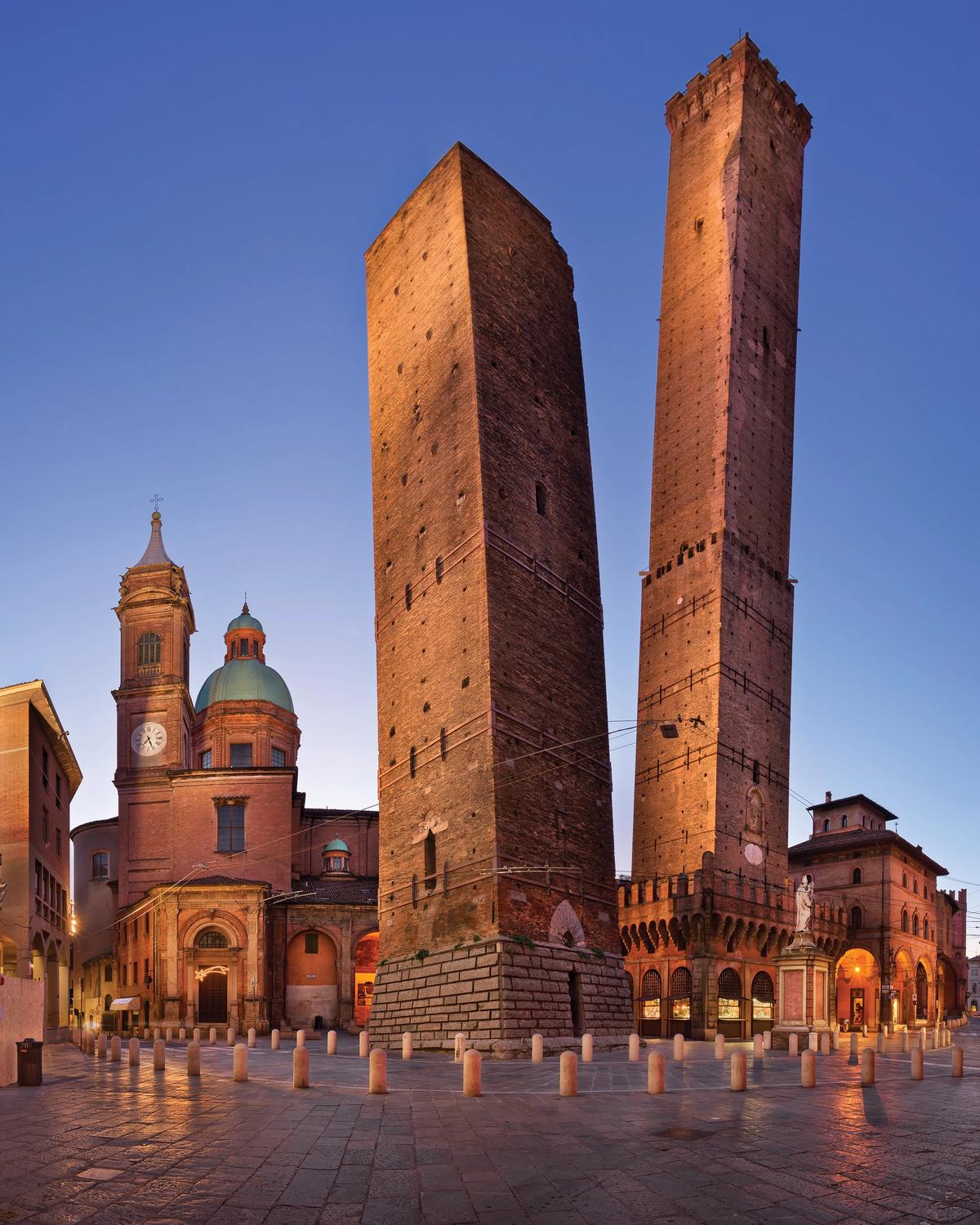Private companies have donated more than €2m to save the mediaeval Garisenda tower in Bologna, a 48m-tall, leaning monument that has been cordoned off following fears it may collapse. The figure confirms a growing trend of private companies providing funds to renovate and secure Italy's dilapidated heritage.
Constructed in 1110, the Garisenda tower, which stands alongside the 97m-tall Asinelli tower in Bologna’s historic centre, began to tilt when the ground underneath it subsided shortly after it was built. Cited in Dante’s Divine Comedy and Charles Dickens’s travelogue Pictures From Italy, the iconic structure is central to Bologna’s identity, Matteo Leopore, mayor of the city, told The Art Newspaper. “The Garisenda and Asinelli are not just cultural symbols but political ones, too,” he said. “Bologna’s communist party used to use the towers, instead of the hammer and sickle, as its emblem.”
Local authorities cordoned off the tower in December after sensors showed that the tower, which had leant southeast for centuries, was beginning to tilt southwards. Lepore said it was “very probable” that the project would cost €20m, adding that he hoped the work would be completed in less than the ten years needed to save the Tower of Pisa in the 1990s.
To raise the funds, councillors launched a fundraising campaign in November, taking advantage of Italy’s “Art Bonus” scheme, a culture ministry initiative offering donors a 65% tax deduction. Piquadro, a Bologna-based leather goods producer, and Macron, a local sportswear distributor, are among a dozen companies that have made donations so far, with both contributing €100,000 each. The campaign had raised over €2m by the time The Art Newspaper went to press. Lepore said a number of individuals had also made donations and predicted the campaign would reach the €3m mark by Christmas.
This is not the first time private companies have come to the rescue of Italy’s heritage. In 2010, Diego Della Valle, head of the Italian shoemaker Tod’s, donated €25m for a major restoration of the Colosseum, winning the rights to use the image of the Roman landmark in his adverts for 15 years. The company also announced in November that it would give €2.5m to renovate Palazzo Marino in Milan, the city council’s 16th-century headquarters. The renovation is expected to take up to 16 months.
Michele Campisi, general secretary of the Italia Nostra heritage group, celebrated the fact that private companies are investing in heritage, adding that it was inevitable they should expect extra visibility in return. “The [culture] ministry dreams up many big projects but ends up realising far fewer than it announces,” he said. “If you use museum space to sell your jewellery we disagree, but if you sponsor an exhibition with your brand we agree.”
Campisi said that Italia Nostra was developing its own model for private renovation projects, revealing that the organisation would work with businesses to identify heritage sites that require their funds. “We are not talking about sponsorship with advertising rights but philanthropy,” he said.
In the first phase of work on the Garisenda tower, which is expected to be completed in February, red containers will be connected and anchored to the ground to form a fence around the structure that will save surrounding buildings in the event of a collapse. The city council has allocated €4.2m for the initial work.
Lepore said the council was nearing its overall goal of €20m, after €5m had been provided by the Emilia-Romagna region and another €5m from the government’s pot of post of EU Covid-recovery funds. “If you consider there were 100 towers in mediaeval Bologna but just 24 today, that shows you the importance of securing the Garisenda,” he said.


